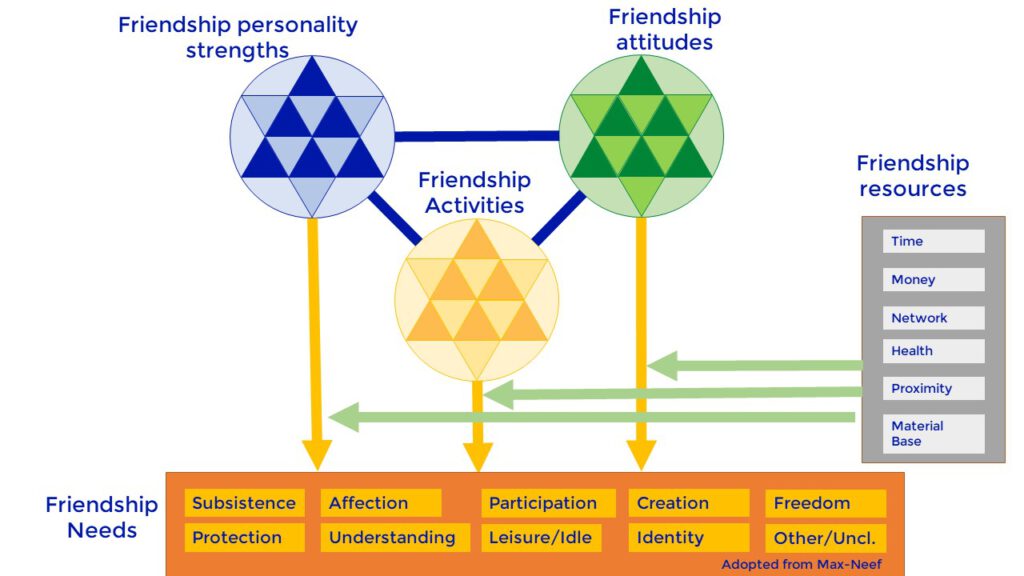This concept is a combination of three sources. It is thus not original per se, I think but more the realisation that these three concepts taken together really come together to make a lot of sense in the context of friendship.

First: C.S. Lewis in the book ‘Four Loves‘ writes about Gift Loves and Need Loves.
‘The first distinction I made was therefore between what I called Gift-love and Need-love. The typical example of Gift-love would be that love which moves a man to work and plan and save for the future well-being of his family which he will die without sharing or seeing; of the second, that which sends a lonely or frightened child to its mother’s arms.’
The second concept is that of love languages, in the excellent book by Gary Chapman, which outlines five ways to express and experience love: with the items of words of affirmation, quality time, giving gifts, acts of service, physical touch. These are very poignant, but in my view not sufficiently exhaustive to really describe the dynamic within friendships.
The third concept is that of human needs. Whilst Maslow and the likes usually come to mind, there are however a good dozen other typologies of physical and psychological needs. The best overview of these is given in Alkire 2002 ‘Dimensions of Human Development’ and on comparing it to the kind of key words describing friendship, the axiological framework of Max Neef ‘Human Needs’ with the dimensions: Subsistence, Protection, Affection, Understanding, Participation, Leisure, Creation, Identity and Freedom.
These three concepts I combine to the Friendship Loves in order to provide a measure on how people experience their need loves being addressed by friends and how people express their gift loves towards their friends, mapping the various friendship experiences and actions into the dimensions of Max Neef.
One key difference of this concept to the Love Languages is that the expression and experience are not the same channels. So there are numerous actions that would be e.g. protection as an gift-love action but subsistence as a need-love experience, or affection as a gift-love action and identity or freedom as a need-love experience.
For this reason I designed two separate assessments on this site. Once a Needs Love Assessment, which you can access at
https://practicalfriendship.limequery.org/581226?lang=en
And a Gift Love Assessment, which you can access at
https://practicalfriendship.limequery.org/711518?lang=en
They are relative assessments, so gauging with offsetting statements which of the 9 loves resonate most with your experiencing or expressing, and thus in design is kept similar to the 5 Love language Assessment from Chapman, just targeting the 9 categories of Max-Neef with Statements from the Friendship Statement Framework.
This constitutes the orange box in the Friendship Framework

